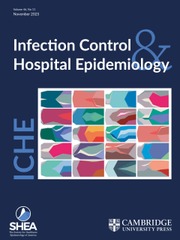Article contents
Respiratory Syncytial Virus
Published online by Cambridge University Press: 21 June 2016
Extract
Respiratory syncytial virus (RSV) is the most important cause of lower respiratory tract infection in outpatients, as well as the major viral cause of nosocomial illness in pediatric inpatients. Immunity to this common pathogen is short lived and reinfection can occur later in life, even into adulthood. Virtually all children have one infection before 24 months and 50% experience two or more episodes of infection. The attack rate is substantial with about half of all infants in a community becoming ill during the season's first epidemic. About 100,000 children in the US each year become ill enough to require hospitalization, the hospitalization rate being 1411,000 during epidemic periods. In certain locations, RSV accounts for about 45% of hospital admissions for respiratory disease in children under two years of age.
Information
- Type
- Special Sections
- Information
- Copyright
- Copyright © The Society for Healthcare Epidemiology of America 1988
References
- 2
- Cited by

